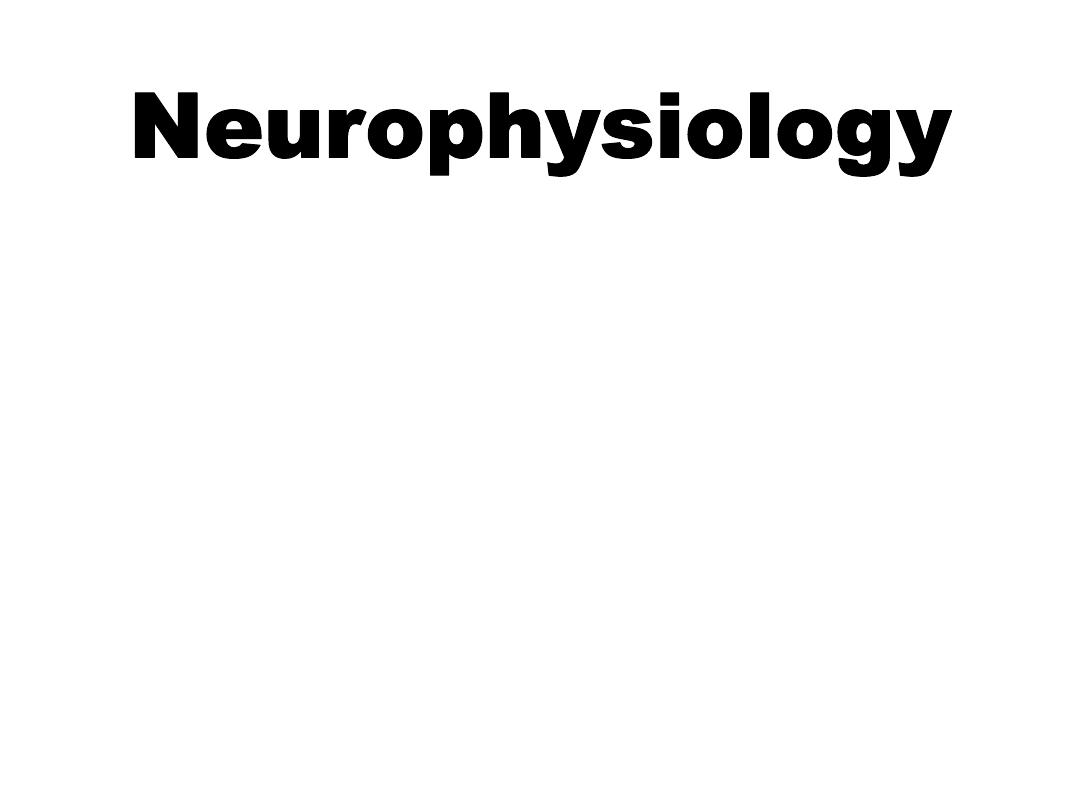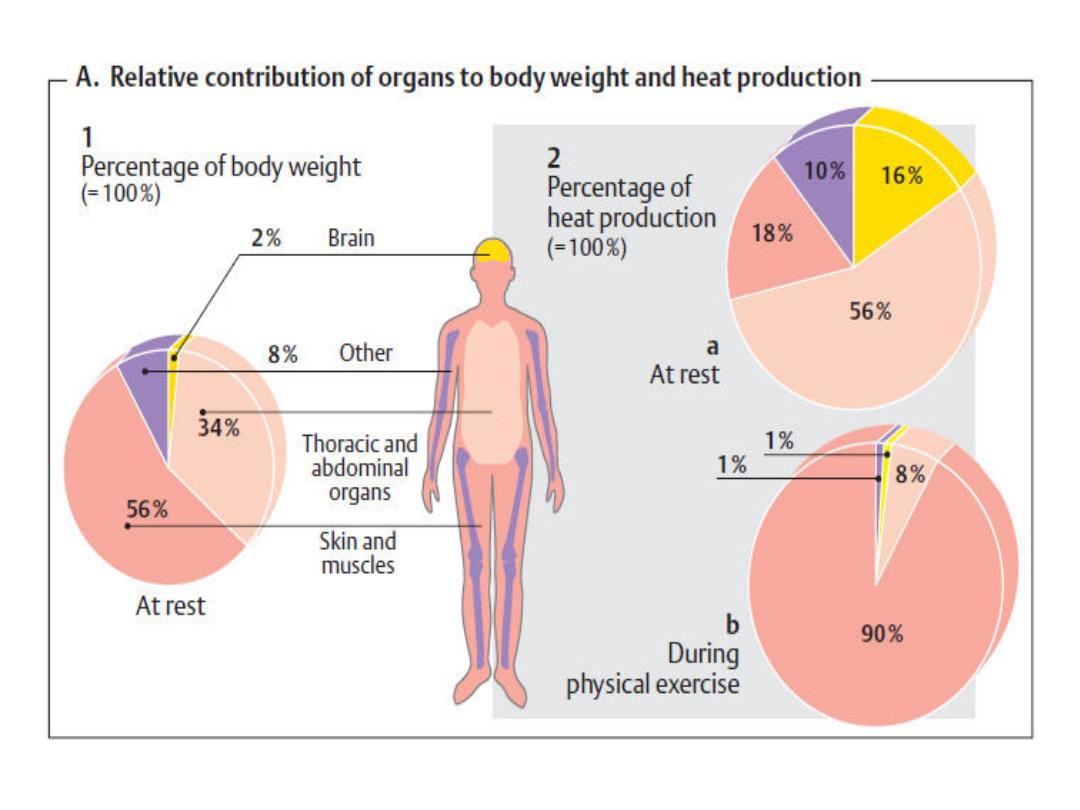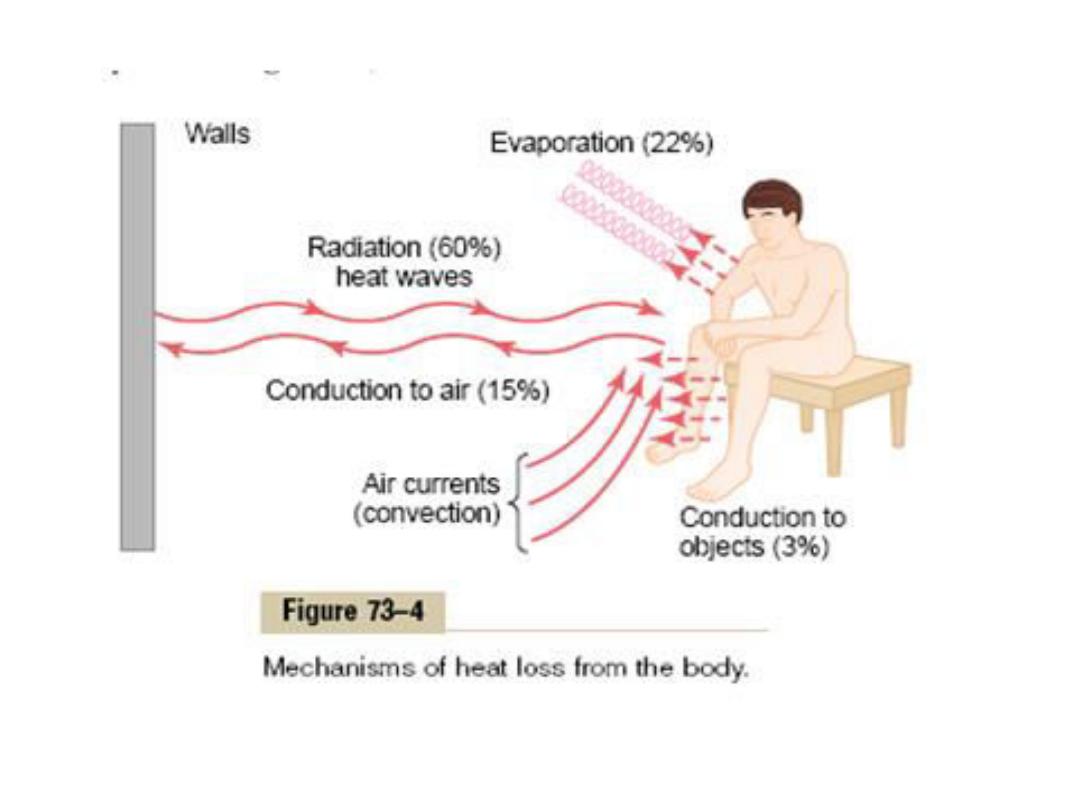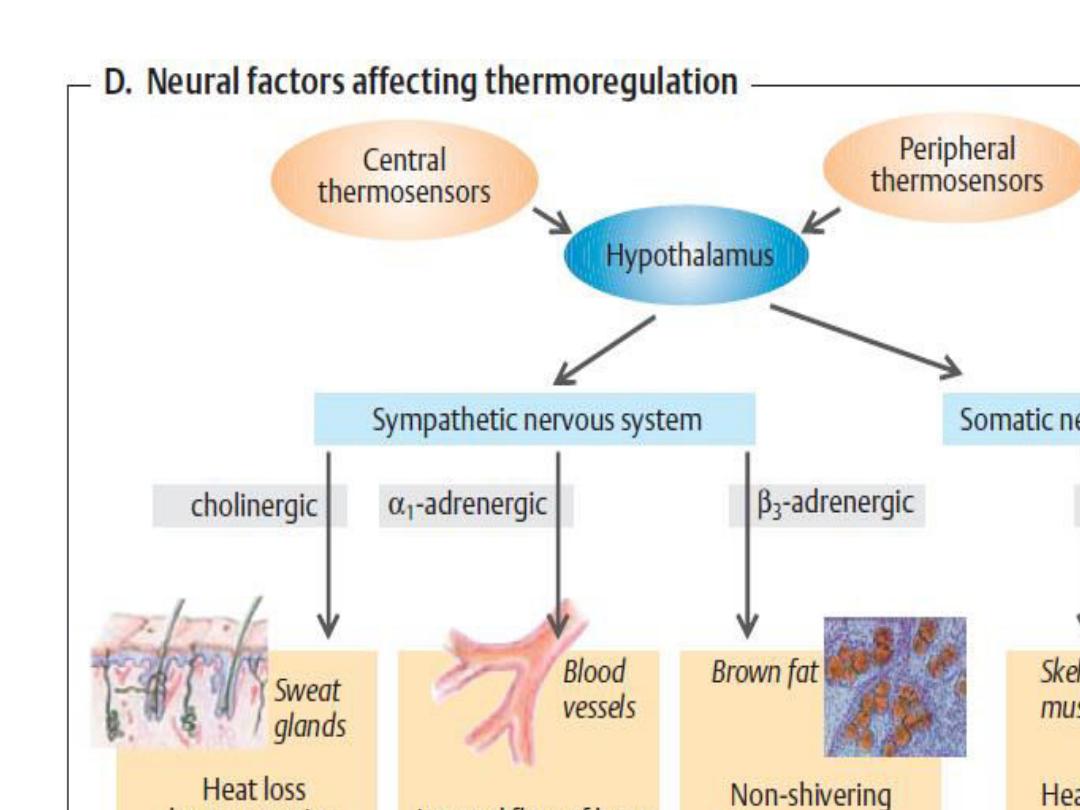
Body temperature regulation
Lecture 8
By
Dr. Mufeed Akram Taha
FIBMS Neurology
Clinical Attachment Turkey

The body temperature of humans
remains relatively constant despite
changes in the environmental
temperature. This homeothermy
applies only to the core
temperature (≈37 °C) of the body

The e tre ities a d ski shell
exhibit poikilothermy, i.e., their
temperature varies to some extent
with environmental temperature. In
order to maintain a constant core
temperature, the body must balance
the amount of heat it produces and
absorbs with the amount it loses; this
is thermoregulation

Heat production
The amount of heat produced is determined
by energy metabolism. At rest,
approximately 56% of total heat
production occurs in the internal organs
and about 18% in the muscles and skin.
During physical exercise, heat production
increases several-fold and the percentage
of heat produced by muscular work can
rise to as much as 90% .

To keep warm, the body may have to
generate additional voluntary (limb
movement) and involuntary
(shivering) muscle contractions.

Cold stimulates a reflex pathway
resulting in norepinephrine release in
fatty tissues, which in turn stimulates
(1) lipolysis and (2) the expression of
lipoprotein lipase (LPL) and
thermogenin. LPL increases the supply
of free fatty acids. Thermogenin
localized in the inner mitochondrial
membrane is an uncoupling protein
that functions as an H+ uniporter.

Heat produced in the body is absorbed
by the bloodstream and conveyed to
the body surface. In order for this
internal flow
of heat to occur, the
temperature of the body surface
must be lower than that of the body
interior. The blood supply to the skin is
the chief determinant of heat
transport to the skin.


Heat loss
Heat loss occurs by the physical
processes of radiation, conduction,
convection, and evaporation

1. Radiation:
Loss of heat by radiation
means loss in the form of infrared heat
rays the amount of heat lost by radiation
from the skin is chiefly determined by the
temperature of the radiator . Heat net
–
radiates from the body surface to objects
or individuals when they are cooler than
the skin, and net
–radiates to the body from
objects (sun) that are warmer than the
skin.

2. Conduction :
These processes
involve the transfer of heat from
the skin to a cooler object (e.g.
Sitting on rock) in contact with
the body (conduction).

3.Convection:
Conduction of heat from
the body to the air is self-limited
unless the heated air moves away
from the skin, so that new, unheated
air is continually brought in contact
with the skin, a phenomenon called
air convection

4-Evaporation:
The above mechanisms alone are unable to
maintain adequate temperature
homeostasis at high environmental
temperatures or during strenuous physical
activity. Evaporation is the means by which
the body copes with the additional heat.
The water lost by evaporation reaches
theskin surface by diffusion (insensible
perspiration) and by neuron-activated
sweat glands.

The surrounding air must be relatively
dry in order for heat loss by
evaporation to occur. Humid air
retards evaporation.


Thermoregulation
Thermoregulation maintains the core
temperature at a constant set point
(37°C) despite fluctuations in heat
absorption, production, and loss. The
core temperature exhibits circadian
variation.

It fluctuates by about 0.6 °C and is
lowest around 3 a.m., and highest
around 6 p.m. The set point
changes are controlled by an
intrinsic biological clock . Extended
set-point fluctuations happen
during the menstrual cycle and
fever.

Temperature detection mechanisms
1-Anterior Hypothalamic-Preoptic Area
The principal areas in the brain where
heat or cold from a thermode affects
body temperature control are the
preoptic and anterior hypothalamic
nuclei of the hypothalamus.

The anterior hypothalamicpreoptic
area has been found to contain large
numbers of heat-sensitive neurons as
well as about one third as many cold-
sensitive neurons. These neurons are
believed to function as temperature
sensors for controlling body
temperature.

2-Detection of Temperature by
Receptors in the Skin and Deep Body
Tissues:
Sensory receptors in the skin is endowed
with both cold and warmth receptors.
Deep body temperature receptors are
found mainly in the spinal cord, in the
abdominal viscera, and in or around
the great veins in the upper abdomen
and thorax.

Posterior Hypothalamus Integration of
temperature sensory signals
The temperature sensory signals from
the anterior hypothalamic-preoptic
area are transmitted into this
posterior hypothalamic area.

Here the signals from the preoptic
area and the signals from
elsewhere in the body(heat and
cold receptors in the skin and
deep tissues) are combined and
integrated to control the heat-
producing and heat-conserving
reactions of the body.

Neuronal Effector Mechanisms That
Decrease or Increase Body
Temperature
When the hypothalamic temperature
centers detect that the body
temperature is either too high or too
low, they institute appropriate
temperature- decreasing or
temperature-increasing procedures.

Temperature-Decreasing
Mechanisms
The temperature control system
uses three important mechanisms
to reduce body heat when the
body temperature becomes too
great:

1. Vasodilation of skin blood vessels. This
is caused by inhibition of the
sympathetic centers in the posterior
hypothalamus that cause
vasoconstriction.
2. Sweating. Stimulation of the anterior
hypothalamus-preoptic area in the
brain either electrically or by excess
heat causes sweating.
3. Decrease in heat production.

Temperature-Increasing Mechanisms
When the body is too cold, the
temperature control system institutes
exactly opposite procedures. They are:
1. Skin vasoconstriction throughout the
body.This is caused by stimulation of
the posterior hypothalamic
sympathetic centers.

2. Piloerection. Piloerection means hairs
sta di g o e d . This is ot
important in human beings, but in
lower animals, upright projection of
the hairs allows them to entrap a thick
la er of i sulator air e t to the ski ,
so that transfer of heat to the
surroundings is greatly depressed.

3. Increase in thermogenesis (heat
production). Heat production by the
metabolic systems is increased by
promoting shivering, sympathetic
excitation of heat production, and
thyroxine secretion.

Fever
Exogenous (e.g., bacteria) and
endogenous pyrogens (various
interleukins and other cytokines from
macrophages) can cause the set-point
temperature to rise above normal.
This is triggered by prostaglandin PGE2
in the hypothalamus.

In the initial phase of fever, the core
temperature (although at its normal level)
is too low compared to the elevated set-
point. This results in shivering to raise the
core temperature. As the fever decreases,
i.e. the set-point returns toward the
normal temperature, the core temperature
is now too warm compared to the
normalized set-point, resulting in
vasodilatation and sweating to lower the
core temperature again.


Hypothermia
Means reduction of the core body
temperature below 35 C .It is
caused either accidentally upon
exposure to cold environment or
secondary to lesion in the
hypothalamus .

Thanks
